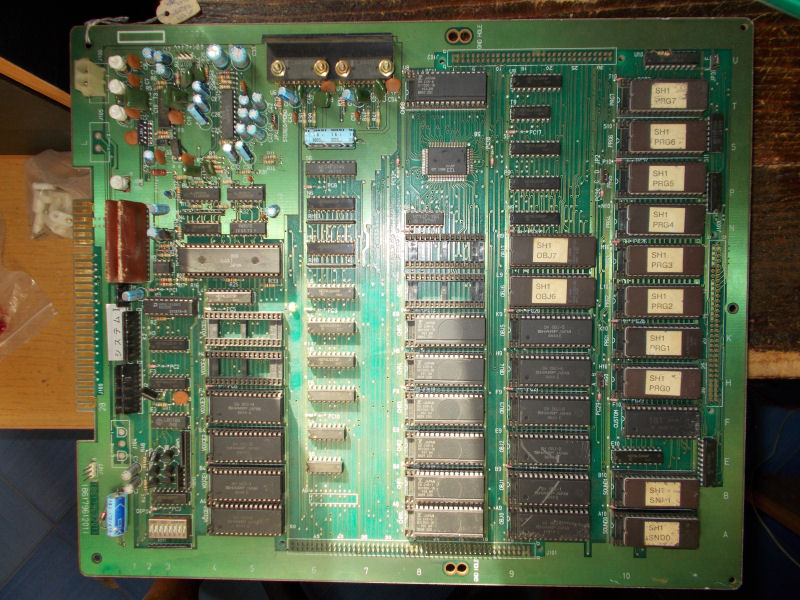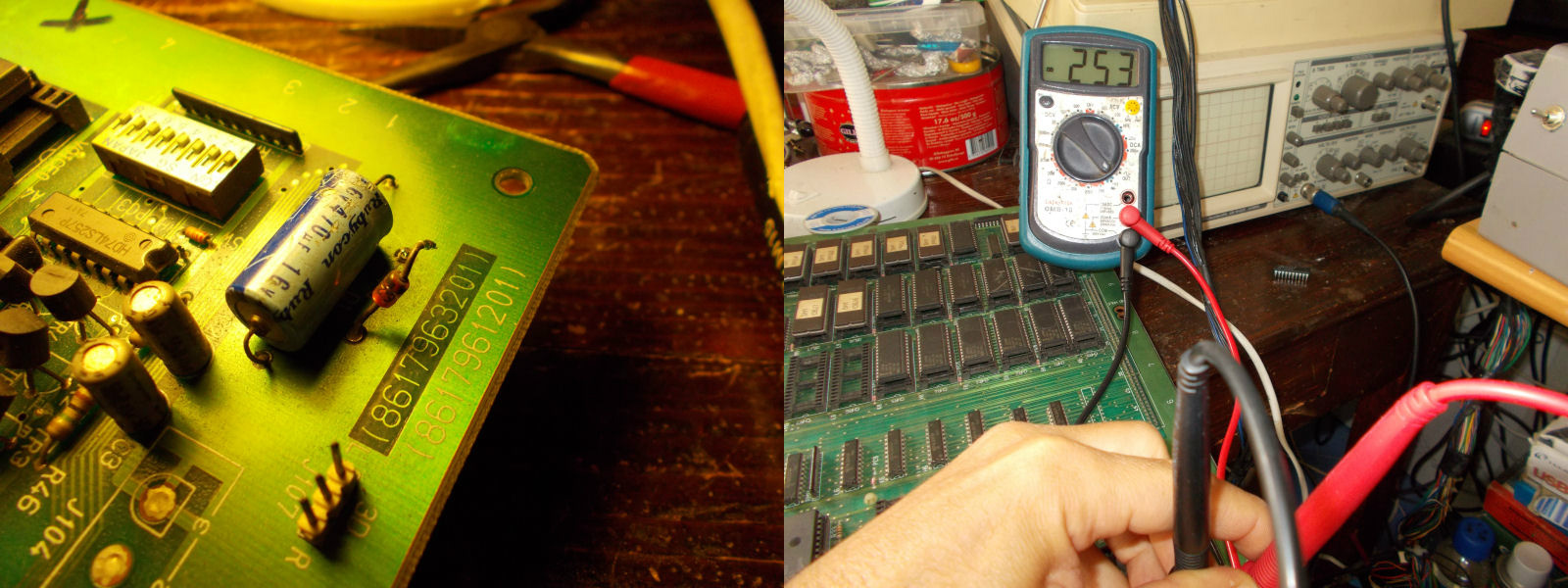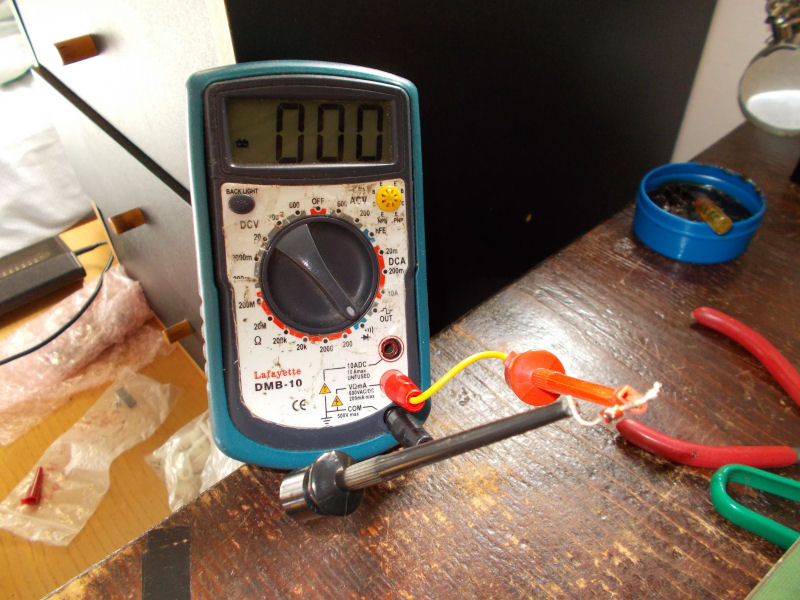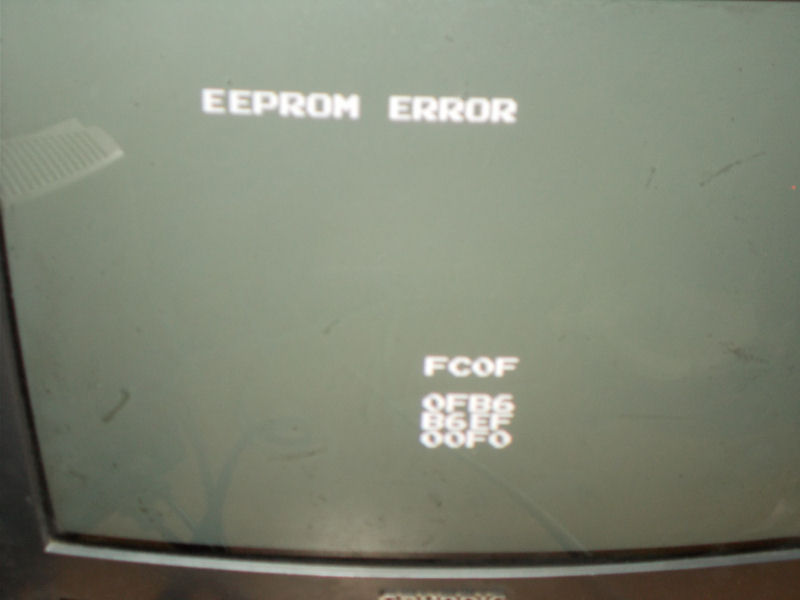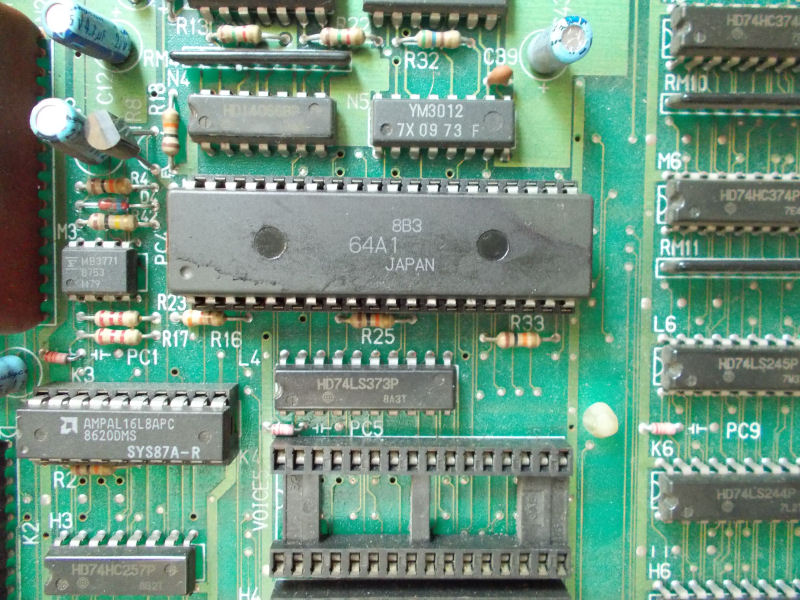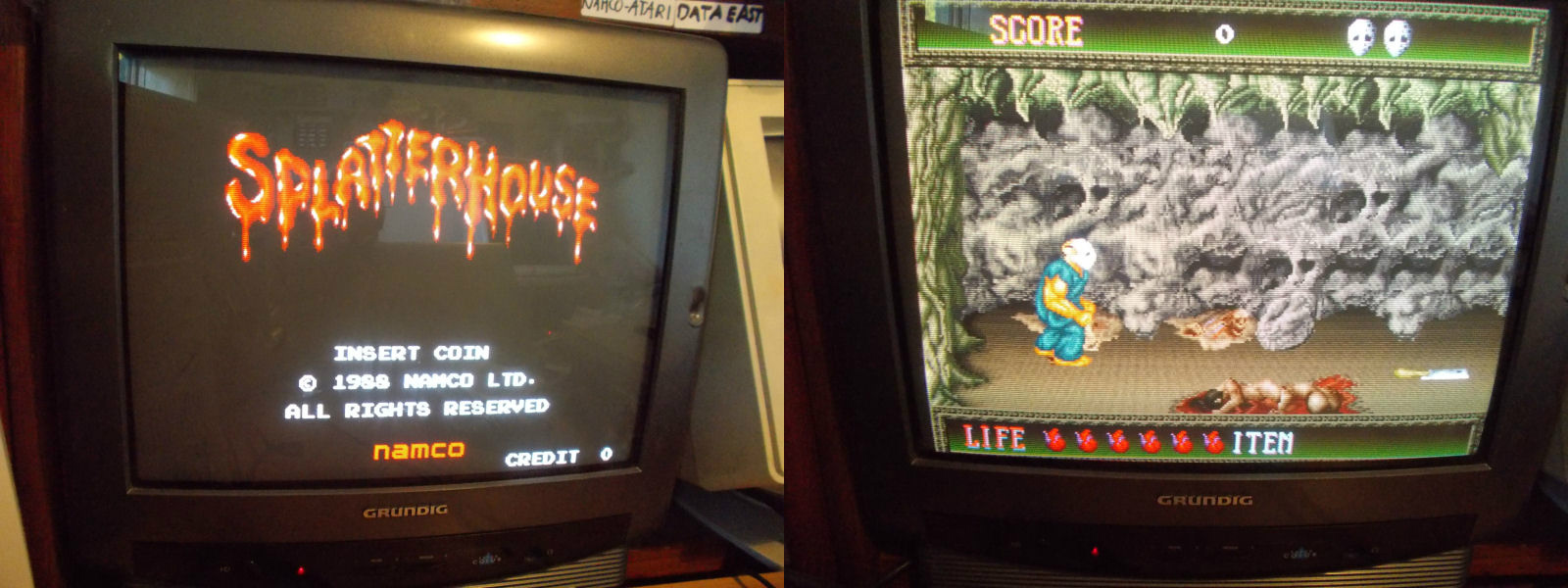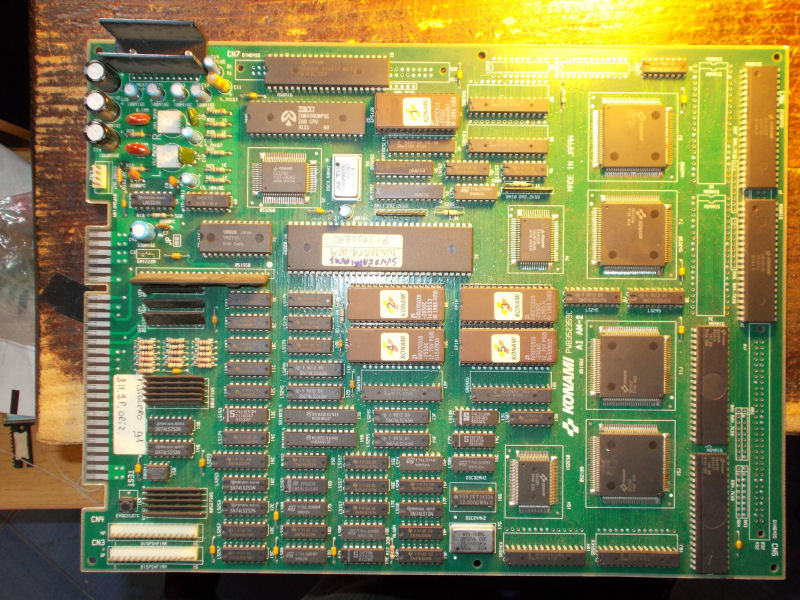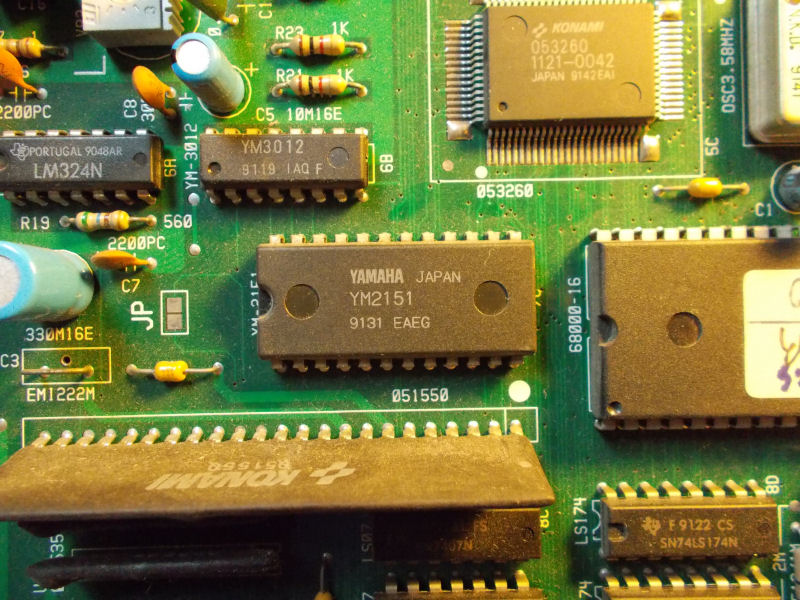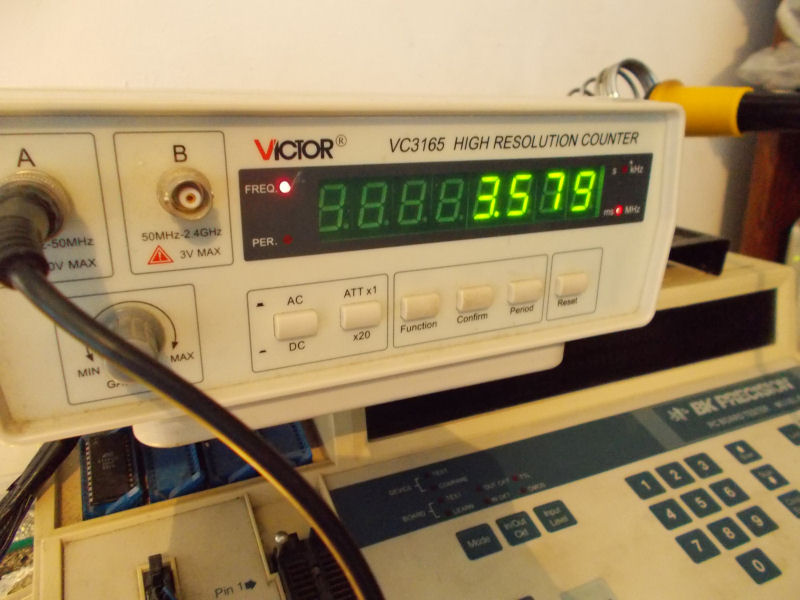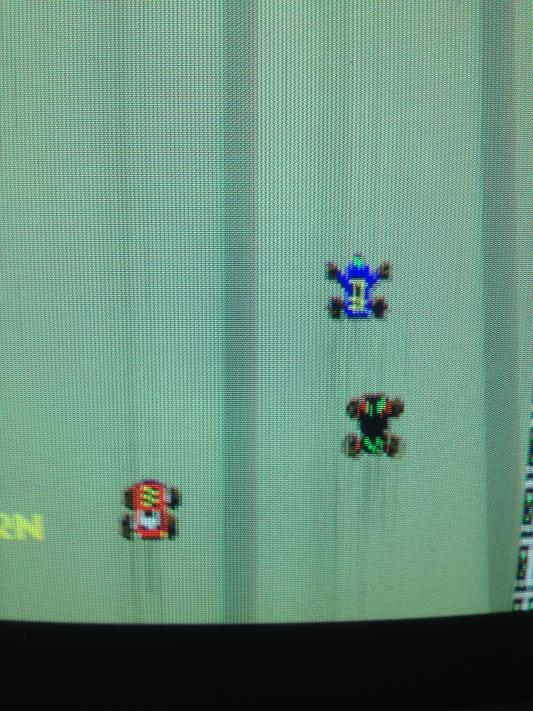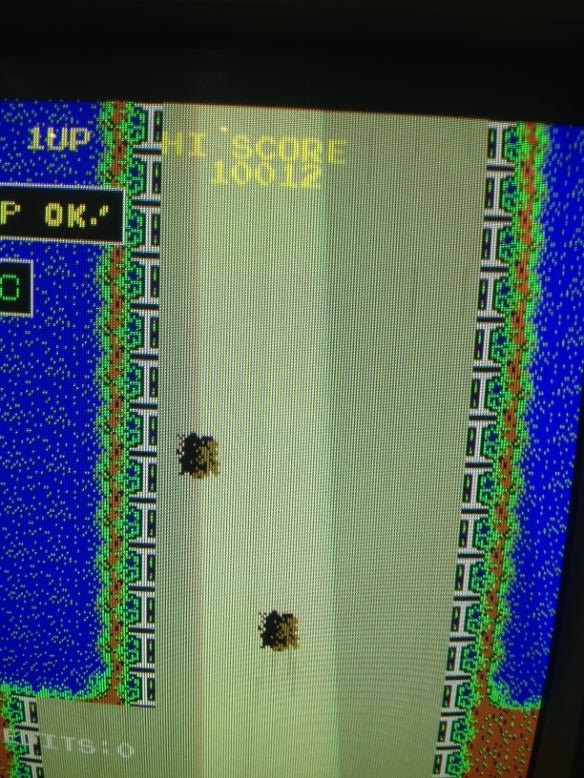I dumped and added the PAL20L10 device (055373) from a Cowboy Moo Mesa PCB today.
The board doesn’t work so it is marked as untested and would appreciate any feedback on this one.
Splatterhouse repair log #3
Another great game on the bench, it’s the turn of Splatterhouse.
It was told me that PCB didn’t boot at all giving only a black screen.First thing I do before powering up a faulty board is to check for shorts with a multimeter.Indeed, this PCB showed a dead short between VCC and GND.Since boardset is made of a CPU and ROM board, I separate them and could locate the short on the ROM board while CPU one was succesfully tested.
I removed all the EPROMs and MASK ROM but short was still here.Usually components prone to go shorted are ceramic capacitors and seminconductors like diodes, transistors.Inspecting the board I noticed a diode on the right of the JAMMA connector @D1.According the schematics it’s a 6.2 zener diode (type 1Z6.2 from Toshiba).Its datasheet says that it’s used as transient suppressor so to protect devices from voltage spikes:
https://www.jammarcade.net/files/Datasheets/1Z6.2.pdf
Obviously, since cathode of diode was tied to VCC and anode to GND (a zener diode must be polarized inversely in order to do its job) I read it in circuit as shorted.But, when I lifted one lead, the short on PCB was cleared :
So this diode was the culprit :
Once removed the short, the PCB booted stuck on this screen:
SInce I experienced similar issue on other Namco System 1 boards, I could quickly trace this to a bad custom ’64A1′ @M4:
Replacing it with a properly programmed HD63701 MCU (see article on our guide section) fixed the board:
Sunset Riders repair log #2
Got this Sunset Riders PCB for a repair:
Gameplay and graphics were OK but music was accelerated and distorted:
Music is generated by the YM2151 sound synthesis chip widely used in many arcade systems:
For first I checked its clock input pin and measured frequency was fine (3.579 MHz) :
When I piggybacked a good chip on it correct music tempo was restored:
Replacing the chip fixed the issue completely.
This is one I fixed some time ago but still worth posting here.
Problem 1: The display would exhibit streaks of grey lines mostly around sprites as the pcb warmed up & progressively get worse over the period. Symptoms would sometimes completely disappear after 10-15 minutes.
Note the grey lines around the sprites.
After inspecting the board there didn’t appear to be any bad connections. I suspected an intermittent component fault.
I didn’t have any freeze spray so I cooled off suspect chips ( I used some ice wrapped up in a sealed plastic bag to avoid any leak ) and found cooling the transistor @ Q4 on the video board would reproduce the above problems. I replaced the faulty 2sc1815 transistor at Q4 on the video board which cleaned up the video sync signal.
Problem 2: Game boots sometimes, other times it does not start and boots to junk.
Probed 6502 address pins, found that all were stuck high whenever the game failed to boot. All other signals looked OK. I tried substituting the main CPU for the sound CPU ( a 6502 as well ) but the symptoms were the same.
I traced the RST signal from the CPU to a 555 timer. There appeared to be a problem with pin 8 from the inverter at 9C to the trigger of the 555. Whenever the game booted to junk pin 8 of the inverter was floating & my logic probe was not registering the normal RST behaviour you would expect. I suspected a bad LS04 at 9C and planned to replace it.
Removed the LS04 at 9C. Pin 7 which is the ground pin was crushed under the IC. In other words it completely missed the plate thru hole ( it was blocked with solder ) during manufacturing and wasn’t making good contact with the ground pad. This game would have been faulty since the day it left the factory & explains the chip’s intermittent behavior.
Re-installed the inverter & re-tested with good results, no more booting to junk!
NANAO MS9-29S chassis repair log
Had this chassis for a long time sat in my loft. Its never worked properly and testing it now it doesn’t do anything.
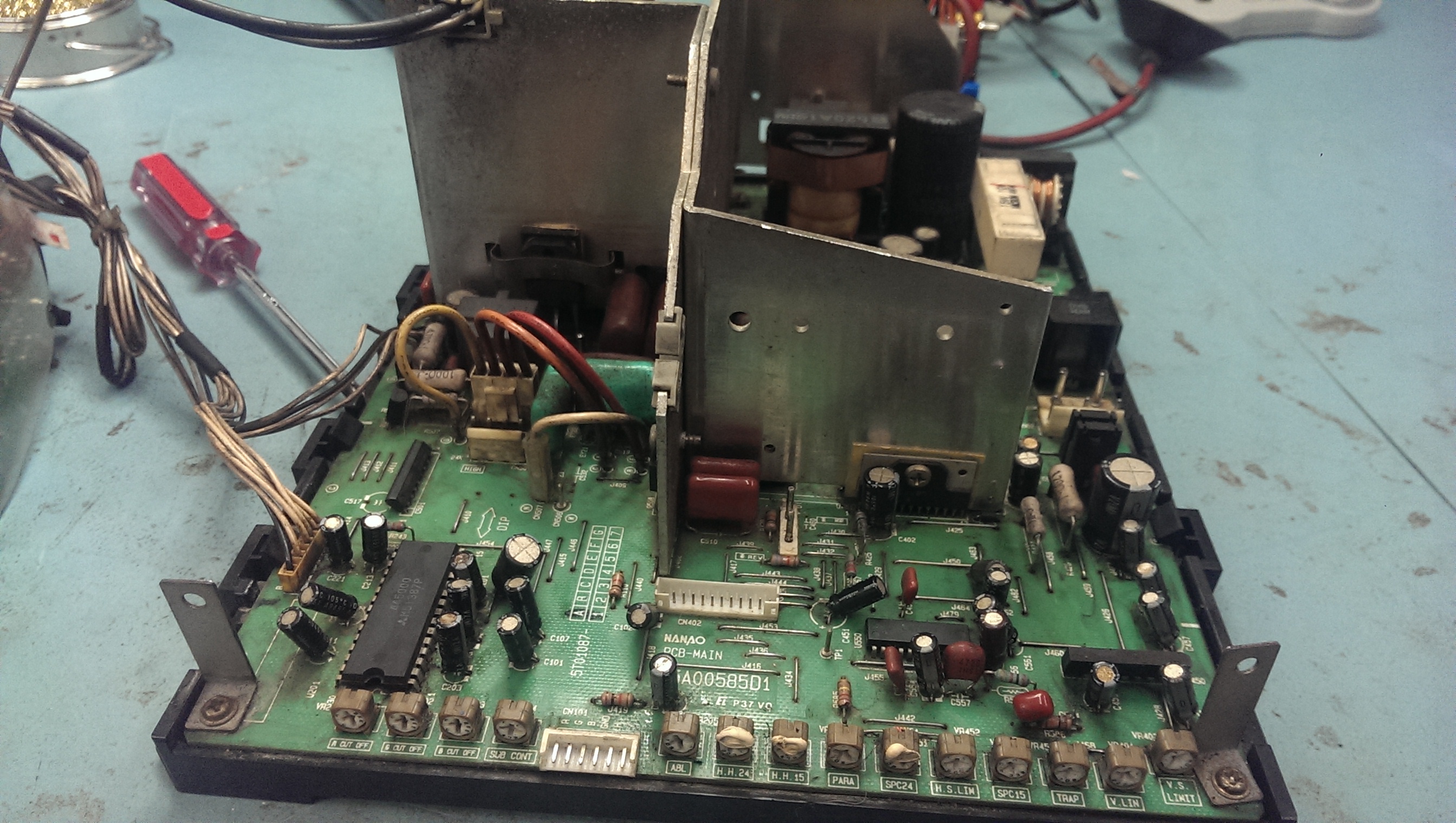
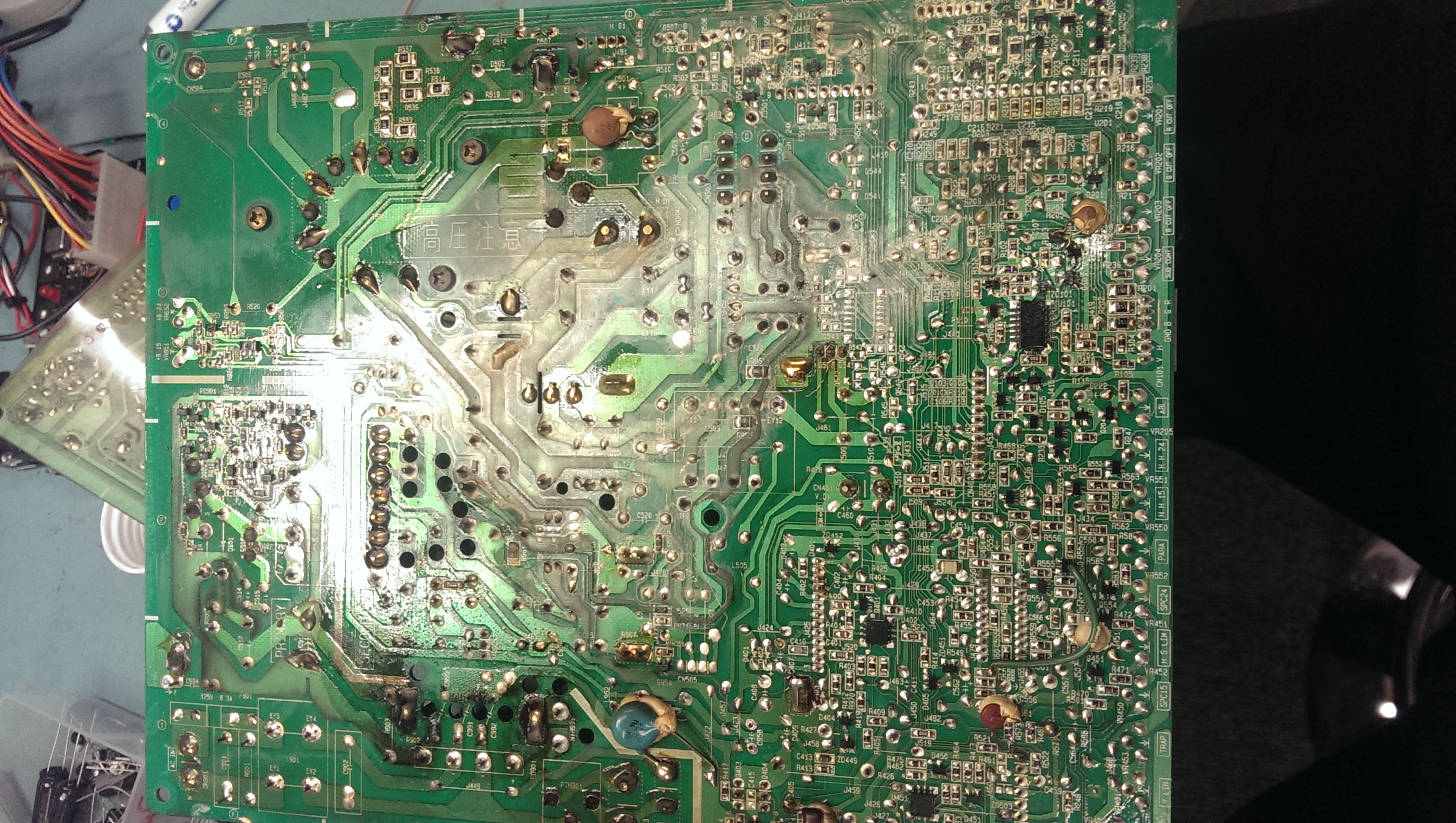
Taking a good look at the chassis showed that quite a few capacitors had been leaking and testing random ones with the ESR tester revealed plenty more bad ones.
As it was in a poor state and also seeing as it is my first attempt at a monitor repair I opted to replaced pretty much every cap I could and do a clean up along the way.
I removed all the caps and tested each one that came out. Here is a list of the ones I found to be bad:
C958 – 47uF 16v
C956 – 680uF 10v
C457 – 10uF 50v
C459 – 22uF 50v
C561 – 47uF 16v
C451 – 22uF 50v
C222 – 22uF 50v
C201 – 47uF 16v
C203 – 47uF 16v
C955 – 180uF 25v
C953 – 47uF 160v
C513 – 10uF 250v
The electrolytic capacitor on the neck board was also bad.
Also found resister R585 (120k ohm) was damaged.
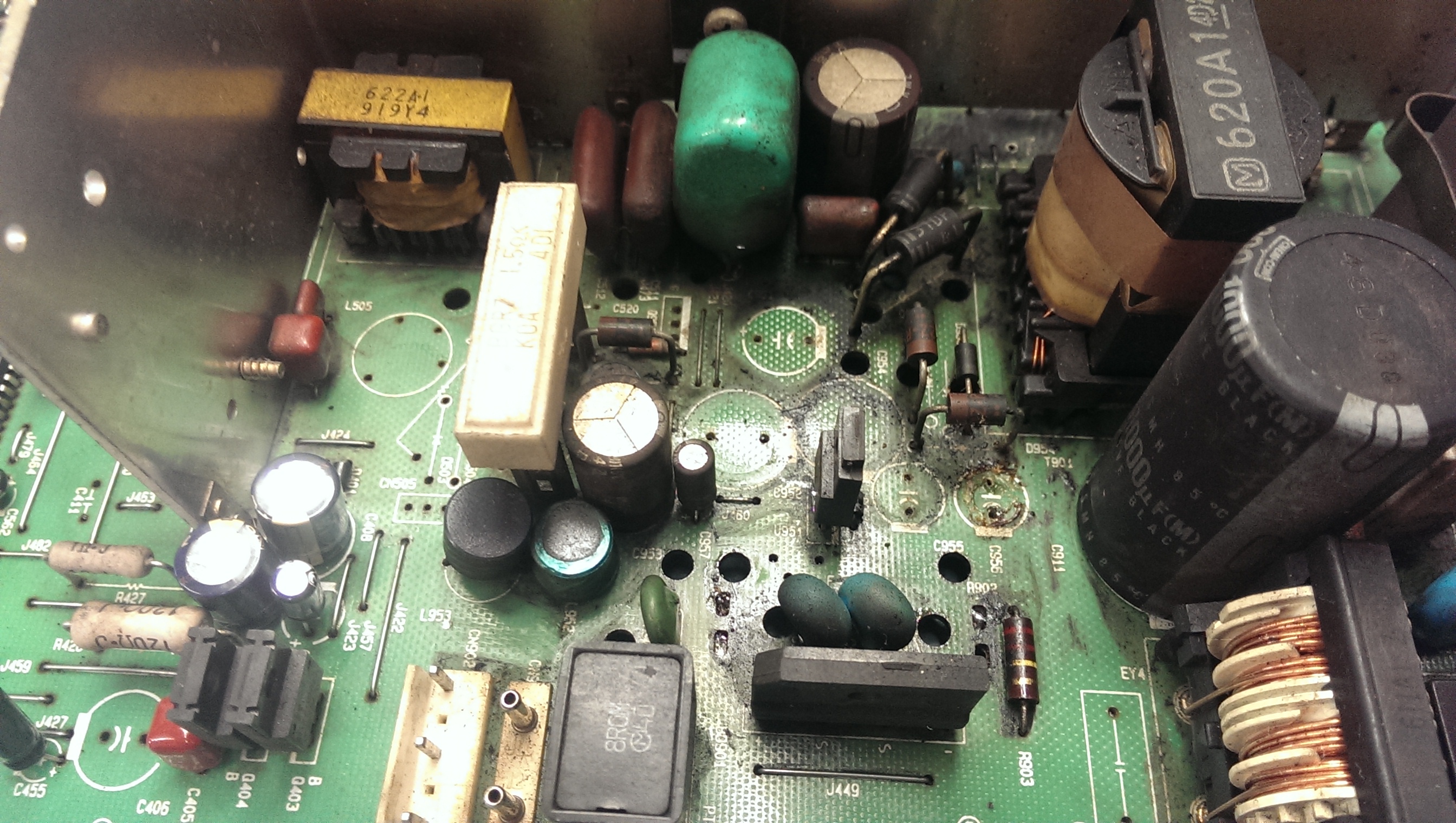
I ordered up the caps and cleaned up the PCB.
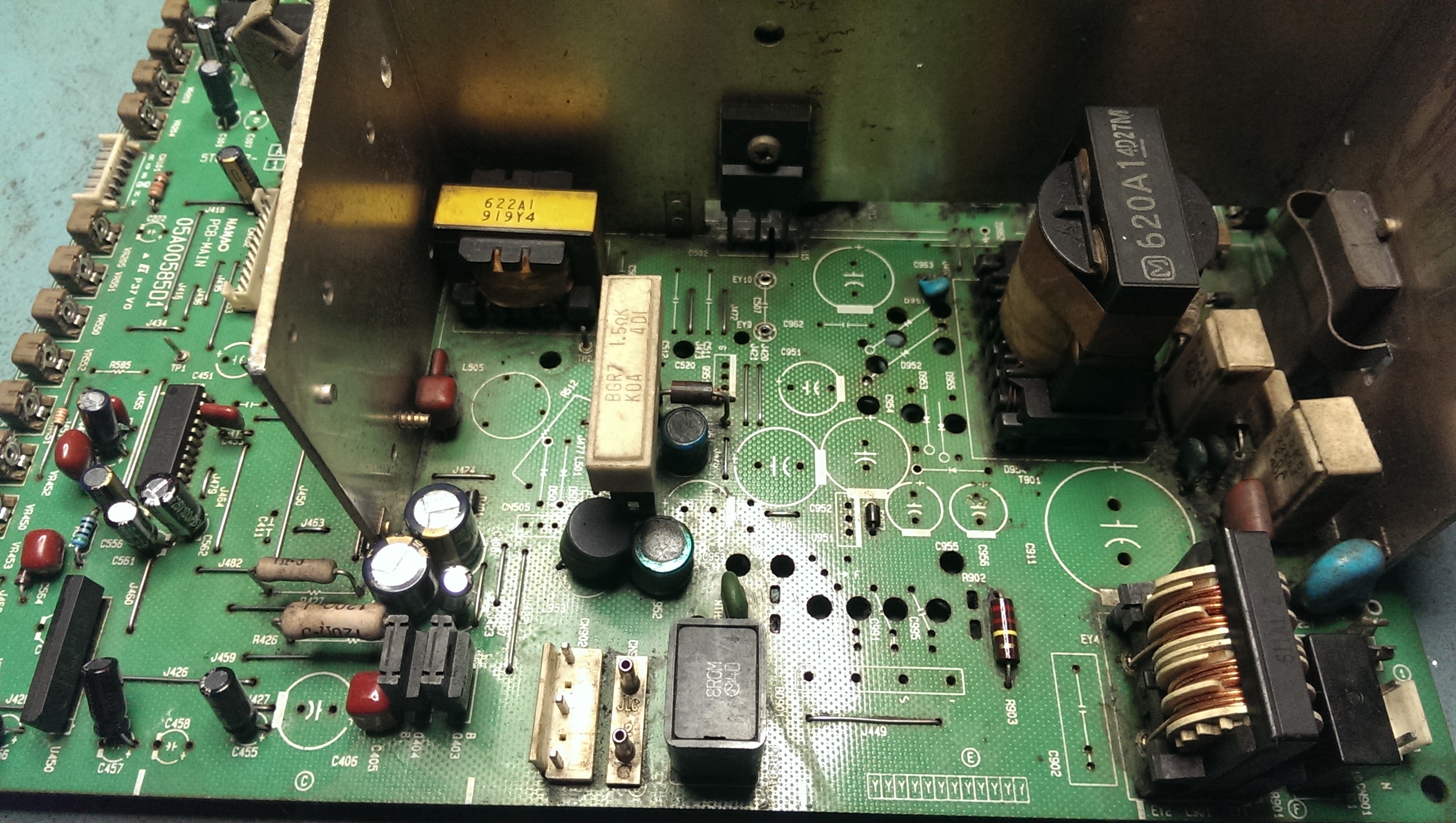
I then turned my attention to the remote board.
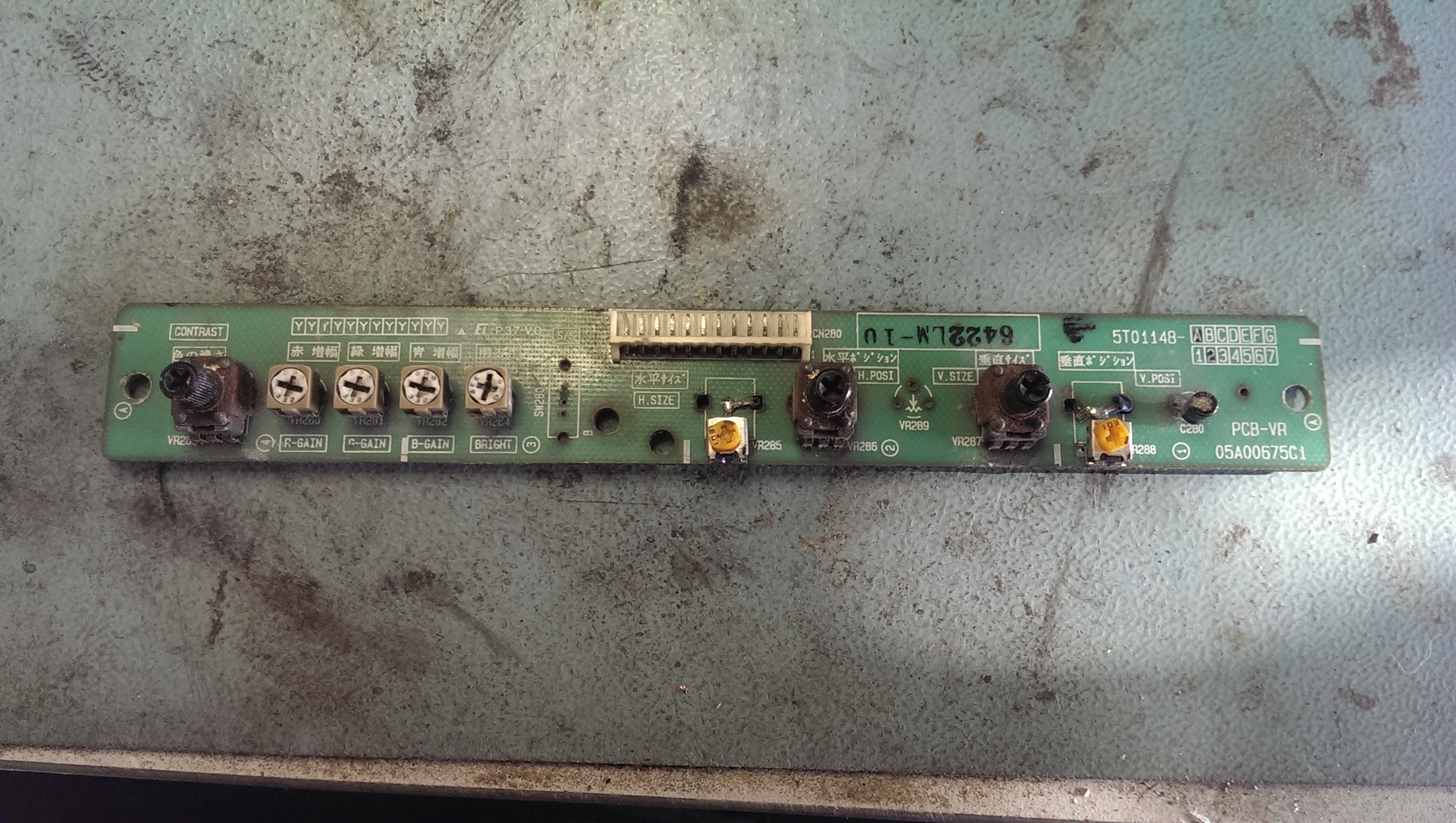
This had two pots missing but had a couple of different ones hacked in their place and the smoothing capacitor was also leaking. I found some 10k Alps potentiometers on eBay so ordered a couple of those too.
The existing pots look in bad shape but they check out OK and operate quite smoothly so ill leave them alone for now.
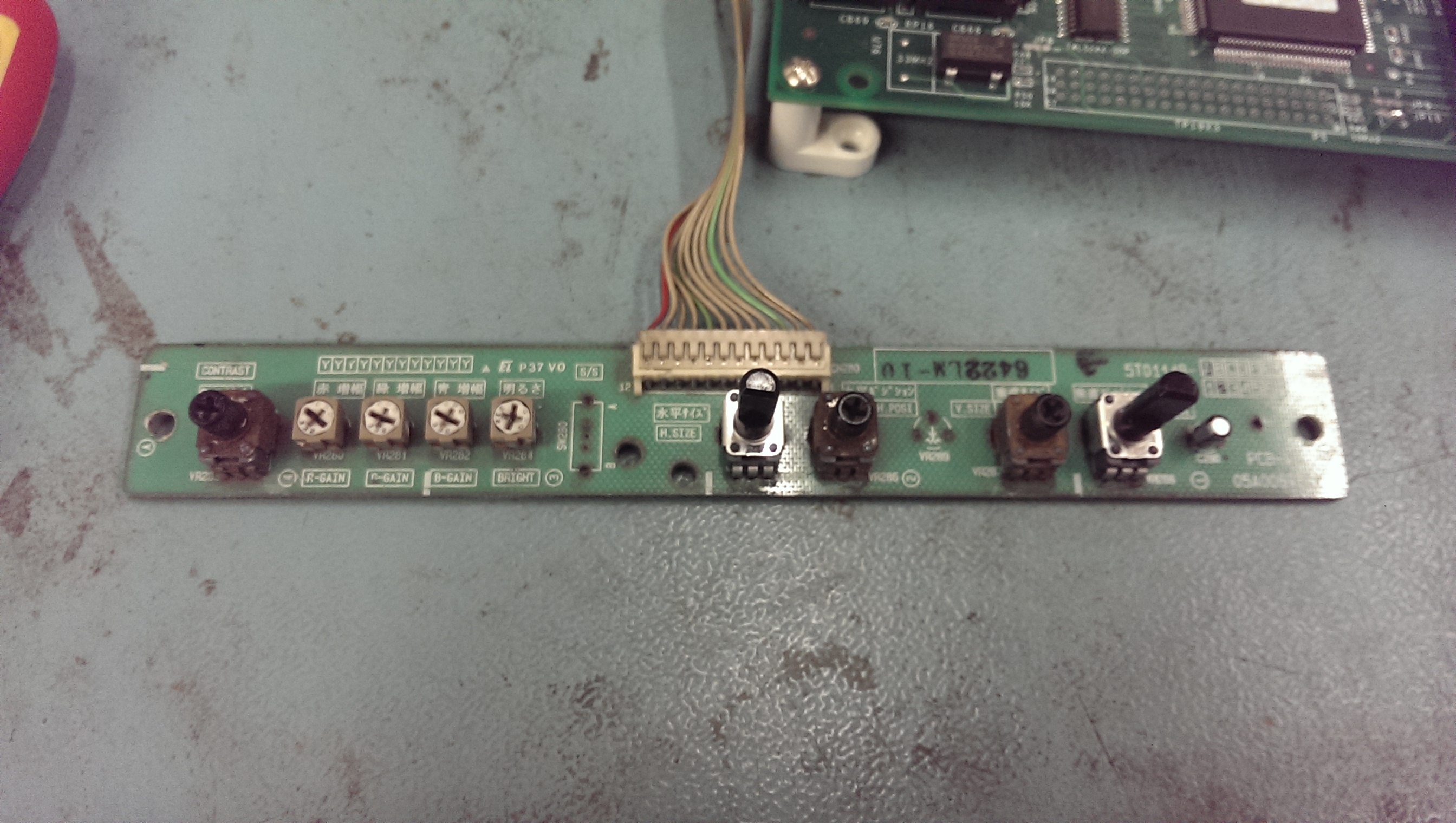
A few days later all my stuff had arrived from Mouser and I was ready to put this thing back together.
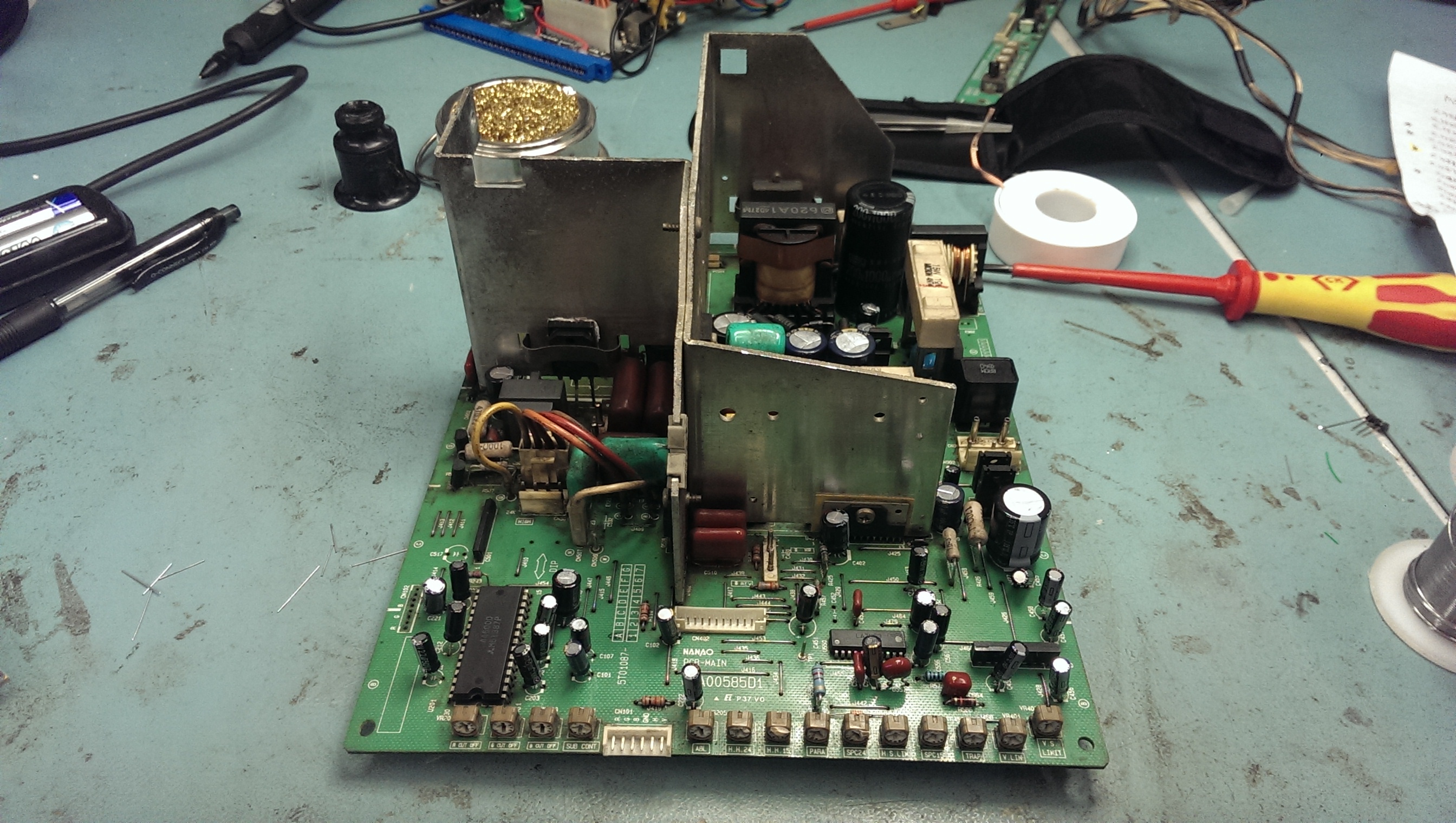
I fitted it back into my spare 29″ tube and fired it up for the first test.
With a bit of tweaking I got the decent picture. The photo doesn’t really do it justice but I’m pleased with the results.



